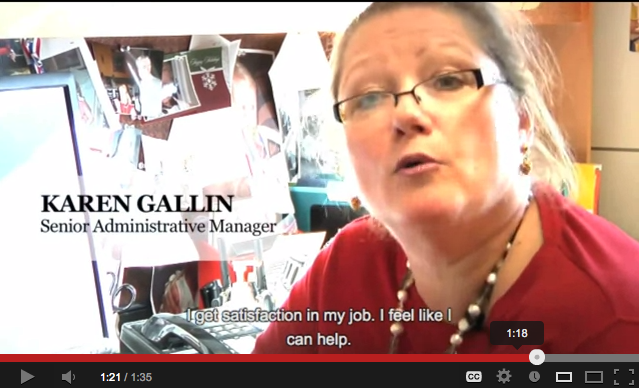 Employer branding videos are beginning to pop up with greater regularity on corporate websites as companies strive to attract top talent.
Employer branding videos are beginning to pop up with greater regularity on corporate websites as companies strive to attract top talent.
But what separates the good ones from the pack?
You don’t need to spend a gazillion dollars and bring in a team from Hollywood.
Here’s a simple formula for success:
Define Your Objective
As Steven Covey said years ago, “Begin with the end in mind.” Before creating your video you should define what you intend to accomplish and be as specific as possible. Are you looking to attract talent for a specific initiative or do you want a target group to know something specific about working for your company? While we traditionally think of employer branding videos for attracting new talent, they can be equally effective for retaining current talent. My video objective is typically the answer to the question, “What do I want people to know/believe/feel/do after watching this video?”
Define Your Audience and Channels
Is your audience internal, external, or both? Do they fall into a specific demographic group? Can you identify attraction drivers for this group? Defining your target audience sets the stage for not only what your message should be, but also how you deliver it. Also, decide up front if your video is intended for your careers website, a social media campaign, a careers microsite, orientation day, specific career fairs, or possibly all of the above.
Segment Your Messaging
People change, and stay at, employers for a variety of reasons. You’re fooling yourself if you think one message will appeal to everyone. If you want employees who have diversity in how they think and solve problems then you need messaging that is segmented. As well, if you want to increase your chances that people will remember your message, stick to one or two themes per video. Don’t try to cram all your messages into one video. Five short ones are better than one long one.
Keep Them Short and Focused
How long should your video be? While there is no “perfect” length, you want to keep the video focused on your message so that your audience is engaged throughout the entire video. It should be long enough that people connect with your message but short enough that they are engaged for the whole video. The ideal ones are less than two minutes, unless there is a really compelling story that grabs your attention.
Be Authentic
The message or experience you’re communicating needs to be authentic. It’s all fine and dandy to say “this is the best place in the world to work.” But what if it’s not? As soon as new employees find out that your claim is not authentic, your biggest problem will be dealing with the exodus out the back door and managing the flood of negative comments in social media.
Use Your Own People
There’s probably nothing more authentic than your own people. While there are some really attractive employer branding videos done with state of the art computer animation, it’s always more compelling to hear the message from a real employee. People remember people more than products or messages. People even prefer videos where someone might stammer for a moment, or make a grammatical error in a statement. Why? Small “errors” actually reinforce authenticity. Also, forget the script reading. We can all tell when someone is reading from a script. Again, it lacks authenticity. To find the right people, identify those with a great story and some enthusiasm when they tell it. They don’t just like what they do –they like who they do it with and everyone knows it.
Use Stories to Communicate Your Message
Use your employees stories to communicate a specific employer brand message. Stories help to authenticate your message and, at the same time, showcase your people to the outside world. If you want to get really fancy you could show your people at work and at home and/or in another non-work setting. If someone tells their personal story of how your company’s flexibility with work schedules helped them in a family crisis, people will remember it. However, if you flash statistics and a value statement across the screen they probably won’t remember them. With an authentic and compelling story, you can make a lasting connection.
Use Visual Techniques
If you have your own people communicating a message through a story, use a technique that filmmakers call a montage sequence. This method involves inserting other shots (often called B roll) while someone is telling the story. The audio of the storyteller is constant throughout the video, but the video changes every few seconds. Periodically you revert back to the video of your storyteller. This technique is very effective at keeping the attention of viewers and multiple visual images can help reinforce your message.
You could conclude with a specific call to action, but it really depends on your initial objective(s). What matters most is simply communicating an authentic message that connects with your target audience.